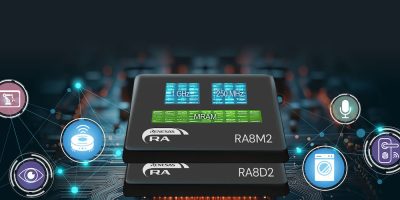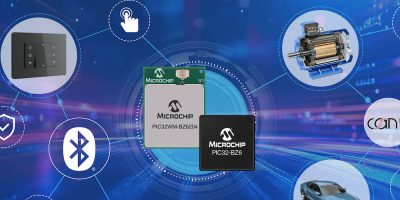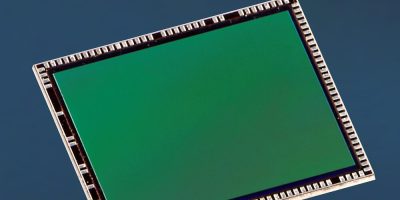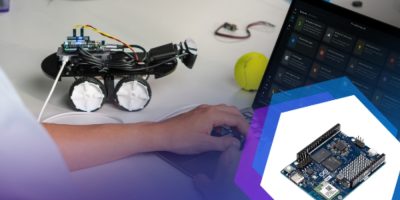Renesas has introduced the RA8M2 and RA8D2 microcontroller (MCU) groups. Based on a 1 GHz Arm Cortex-M85 processor with an optional 250 MHz Arm Cortex-M33 processor, the new MCUs are the latest Renesas offerings to deliver an unmatched 7300 Coremarks of raw compute performance, the industry benchmark for MCUs. The optional Cortex-M33 processor enables efficient system partitioning and task segregation.
Both RA8D2 and RA8M2 devices are ultra-high performance MCUs as part of the second generation of the RA8 Series – the RA8M2 are general-purpose devices, and the RA8D2 MCUs are packed with a variety of high-end graphics peripherals. They are built on the same high-speed, low-power 22-nm ULL process used for the RA8P1 and RA8T2 devices introduced earlier this year. The devices include single and dual core options, and a specialised feature set to address the needs of a broad base of compute intensive applications. They take advantage of the high performance of the Arm Cortex-M85 processor and Arm’s Helium technology to offer a significant performance boost for digital signal processor (DSP) and machine learning (ML) implementations.
The RA8M2 and RA8D2 devices offer embedded MRAM that has several advantages over Flash technology – high endurance & data retention, faster writes, no erase needed, and byte addressable with lower leakage and manufacturing costs. SIP options with 4 or 8 MB of external flash in a single package are also available for more demanding applications. Both the RA8M2 and RA8D2 MCUs include Gigabit Ethernet interfaces and a 2-port TSN switch to address industrial networking use cases.
Both of the MCU Groups provide a combination of the performance of the Cortex-M85 core, together with large memory and a rich peripheral set, making them particularly suitable for a wide range of IoT and industrial use cases. The lower power CM33 core can act as a housekeeping MCU, executing system tasks while the high performance CM85 core stays in sleep mode, to be woken up only as needed for high compute tasks, thus lowering the system power consumption.
The new RA8M2 and RA8D2 Group MCUs are supported by Renesas’ Flexible Software Package (FSP). The FSP enables faster application development by providing all the infrastructure software needed, including multiple RTOS, BSP, peripheral drivers, middleware, connectivity, networking, and security stacks as well as reference software to build complex AI, motor control and cloud solutions. It allows customers to integrate their own legacy code and choice of RTOS (FreeRTOS and Azure RTOS) with FSP, thus providing full flexibility in application development. In addition, Zephyr support is now included. Using the FSP will ease migration of existing designs to the new RA8 Series devices.







